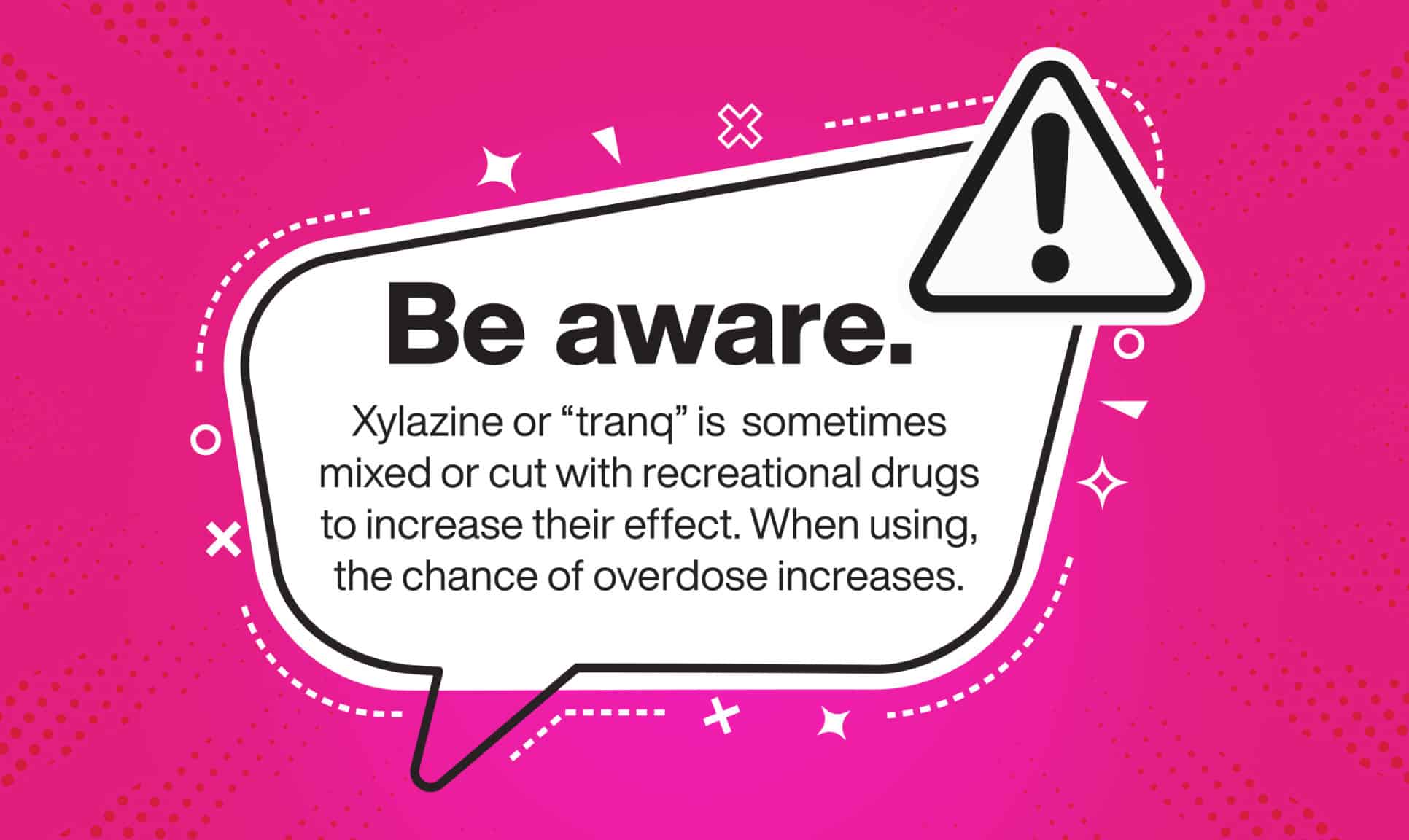Xylazine Spurring Increase in Overdose Deaths

While there has been a great deal of discussion about the dangers of opiates, other drugs that are just as deadly have been linked to an increase in overdose deaths. Xylazine, a non-opioid veterinary tranquilizer, is knowingly or unknowingly being used in combination with other drugs.
Xylazine, also known as “tranq,” rivals fentanyl as a killer. The drug is a depressant. When paired with other drugs like cocaine, heroin, methadone, prescription opiates and even alcohol, it can drastically intensify euphoric effects. It’s often added to drug combinations as a lower-cost filler and frequently is ingested unknowingly.
Individuals who use drugs may believe they understand what they’re taking. However, they are unlikely to be prepared for what can happen to them when they ingest xylazine. In addition to being potentially fatal, the chemical can also cause necrosis (death of bodily tissue).
According to the U.S. Drug Enforcement Agency, some of the most reported symptoms in non-fatal cases include:
- Blurred vision
- Disorientation
- Drowsiness
- Staggering
- Coma
- Miosis (constriction of the pupils)
- Hyperglycemia (high blood sugar)
DEA officials also say it is extremely difficult to know the exact threshold for a fatal exposure due to the wide range of reported doses. Repeated use of xylazine, and alongside other substances like Fentanyl, can have life-threatening effects. Long-term symptoms may include:
- Respiratory depression
- Bradycardia (slowed heart rate)
- Skin lesions
- Frequent, persistent skin infections
- Necrosis
Emergency services should be contacted immediately if you suspect someone is overdosing.
In the event of a suspected xylazine overdose, experts recommend giving the opioid overdose reversal medication naloxone because xylazine is frequently combined with opioids. However, because xylazine is not an opioid, naloxone does not address the impact of xylazine on breathing. Taking opioids in combination with xylazine and other central nervous system depressants, like alcohol or benzodiazepines, increases the risk of life-threatening overdose. Learn more from the U.S. Centers for Disease Control and Prevention (CDC).
Naloxone continues to be a reliable tool in case of an emergency, and should be administered as soon as possible in the event of a suspected opioid drug overdose.
It’s important to note that multiple doses of naloxone may be needed to revive an individual in distress. If an individual is unresponsive or remains unconscious, you only need to wait one minute before administering an additional dose. Naloxone is intended to provide the extra time needed to get individuals the medical care they need.
The Oklahoma Department of Mental Health and Substance Abuse Services provides information, education and advice on additives like xylazine and others. If you have opiates in your house, or if you or someone you know takes recreational substances, you should also have naloxone. To receive a free naloxone kit, click here.
Treatment works. If you are seeking services for yourself or a loved one visit okimready.org to learn more and find a list of nearby treatment providers and resources. Services are available regardless of an individual’s ability to pay. You can also dial 988 to speak with trained mental health professionals and link to services in your area.
If you’d like to learn more about xylazine, click here.